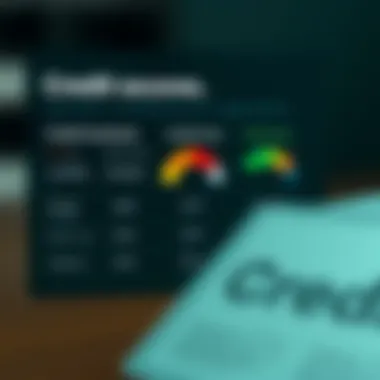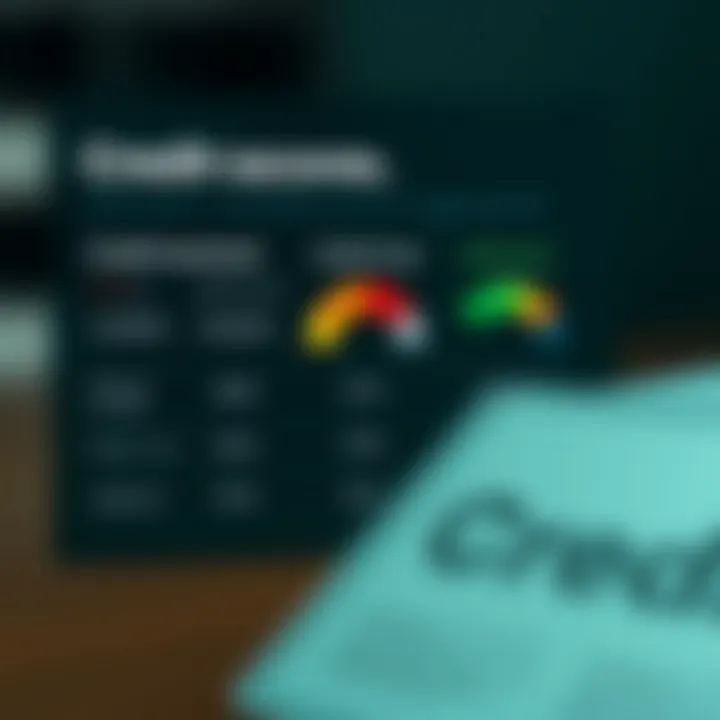Navigating Small Personal Loans Without Income Proof


Intro
Navigating the world of finance can often feel like exploring a dense jungle. For many, securing a personal loan is a vital lifeline during financial crunches. Yet, what about those individuals who don’t have traditional income streams to back up their application? This prompt leads us to an intriguing conversation about small personal loans without income proof. Not everyone has a steady paycheck flowing in every month, be it due to self-employment, gig work, or even personal circumstances that prevent conventional employment.
Without the clear-cut evidence of income, the barriers to obtaining financial assistance can seem daunting. However, understanding the variety of loan options, their conditions, and the potential repercussions can empower individuals to make informed choices. Using the right information can help bridge the gap between need and access.
This article doesn’t just scratch the surface; it dives deep into the nitty-gritty of this financial avenue. From defining essential terms to outlining what to watch out for, we aim to present a comprehensive guide designed for those in need.
Definition of Key Terms
Understanding the terminology surrounding loans is crucial for making informed financial decisions. Few terms that often come into play when discussing loans without income proof include:
- Credit Score: This is a numerical expression of a person's creditworthiness. It allows lenders to assess the risk of lending to a borrower.
- Secured Loan: A type of loan backed by collateral. If the borrower defaults, the lender can take the asset.
- Unsecured Loan: Unlike secured loans, these rely solely on the borrower's promise to pay back. They often come with higher interest rates to compensate for the increased risk for lenders.
- Debt-to-Income Ratio: This metric evaluates how much of a borrower’s income is used to repay debts, giving insight into their ability to manage additional obligations.
- Alternatives to Income Proof: These may include bank statements, assets, or even references that demonstrate financial stability.
Knowledge of these terms sets a solid foundation for understanding the landscape of personal loans where income verification is not a requirement. Understanding the vocabulary can prove invaluable in effectively navigating discussions with lenders or financial advisors, ensuring clarity and confidence in the endeavor.
Creditworthiness and Its Implications
When income proof is lacking, how does one showcase their ability to repay? This is where creditworthiness steps into the limelight. Your credit score, a figure typically ranging from 300 to 850, plays a crucial role in loan applications. If you’ve been diligent about paying off previous loans and maintaining a low credit utilization ratio, lenders may consider you a lower-risk borrower, even in the absence of usual income documentation.
"A good credit score can act like a golden ticket, drawing the attention of those in the lending community, even when income proof is not on the table."
Moreover, lenders might also look at your financial history—payments on bills, rental history, and any regular deposits in your bank account. Those who are keenly aware of these factors boost their chances significantly.
Alternative Financing Options
Apart from conventional loans, several potential alternatives exist that suit individuals without standard income verification:
- Peer-to-Peer Loans: These allow individuals to borrow money directly from other individuals without going through traditional financial institutions.
- Credit Unions: Often more flexible than banks, they might offer personal loans with a less stringent requirement regarding income proof.
- Hard Money Loans: Generally short-term, these are secured by real estate. They're not tied up in income verification but come with higher fees.
- Cash Advances: Provided directly through credit cards, these can also be a stop-gap solution, albeit at high-interest rates.
Having a clear view of these options is vital, as they can often serve as a safety net in tricky financial waters.
Finale
Navigating small personal loans without income proof undoubtedly poses challenges, yet understanding it can turn potential pitfalls into informed opportunities. With a keen grasp of the required terminology, an appreciation of creditworthiness, and a solid grasp of alternative options, the path to obtaining necessary funds is illuminated. In the end, informed borrowers stand a better chance of making choices that serve them well in the long run, ultimately leading them towards stability and growth in their financial journeys.
For more information and deeper insights related to personal loans, consider visiting sites like Investopedia, Nerdwallet, or the Consumer Finanacial Protection Bureau.
As you embark on your financial journey, remember that knowledge is power. Equip yourself well, and see how it transforms your experiences.
Understanding Small Personal Loans
In today's financial landscape, small personal loans serve as a vital lifeline for many individuals facing unexpected expenses or seeking to consolidate debts. These loans, typically ranging from a few hundred to a few thousand dollars, are not merely about funding; they encapsulate the very essence of flexibility and accessibility in borrowing. This section delves into the significance of small personal loans, particularly for those without regular income proof. Understanding this concept is essential, as it caters to a diverse audience grappling with their own unique financial situations.
Definition and Purpose
Small personal loans can be defined as unsecured loans that individuals can borrow with less stringent qualification requirements compared to larger loans. Primarily used for various purposes, these loans are designed to fill financial gaps, cover emergency expenses, or fund small projects. It's not uncommon for people to rely on these loans to manage their cash flow effectively, especially when faced with unforeseen costs, such as medical bills or urgent repairs.
The purpose of small personal loans, particularly without income verification, is to allow access to credit for those who might otherwise struggle to obtain financing. This includes freelancers, part-time workers, or individuals whose income sources are irregular. By providing loans that do not require stringent proof of stable income, lenders open doors for those who find themselves in a financial pinch. Identifying what these loans are and their role in personal finance is pivotal for making sound financial choices.
How They Differ from Other Loans
Understanding how small personal loans vary from other borrowing options is crucial in making informed decisions. These differences can significantly influence borrowers when assessing their financial needs. Here are some key distinctions:
- Loan Amounts: Small personal loans generally range between $500 to $5,000, making them more manageable compared to conventional bank loans, which often start at higher thresholds.
- Repayment Terms: The repayment period for small personal loans is typically shorter, usually from a few months to a few years. This is in contrast to larger loans like mortgages that may span decades.
- Credit Requirements: Small personal loans, especially those available without income proof, tend to have less strict credit score requirements. Traditional loans often require a good credit score, while small loans may accept lower ratings.
- Interest Rates: While interest rates on small personal loans can be higher due to their unsecured nature, the flexibility they afford often makes them a viable option for urgent financial needs.
Understanding these differences enables borrowers to make deliberate choices, aligning their financial needs with the right type of loan. In the following sections, we will explore why small personal loans without income proof might be an appealing option for many.
Why Choose a Small Personal Loan Without Income Proof
Choosing a small personal loan without the need for income verification can often feel like a double-edged sword. On one side, it can offer much-needed support during financial hiccups; on the other, it comes with its own set of complexities and risks. In this landscape, understanding why one might choose such loans is crucial, especially for those navigating tight financial situations or lacking conventional job structures.
Financial Flexibility
One of the standout benefits of small personal loans without income proof is the financial flexibility they provide. These loans cater to individuals who might not have a steady paycheck but possess other means of support. For example, a freelance graphic designer who works on a project basis may have variable income, making traditional loans hard to attain. With loans requiring no income verification, even those with fluctuating earnings can access funds as needed.
Moreover, having a bit of cash on hand can help bridge gaps in payments, whether it’s medical expenses, a car repair, or an unexpected bill. These loans can sometimes have a quicker processing time than traditional ones because they forgo the long verification procedures. The ease of access allows borrowers to tackle immediate financial needs without the lengthy waiting periods often associated with more conventional lending practices.
Accessibility for Various Borrowers
Another prominent point in favor of small personal loans without income proof is their accessibility. Not everyone fits the cookie-cutter mold of a borrower who has a steady job and a reliable income. Think about individuals in transient work situations, like seasonal workers or those in gig economies. For them, conventional loans could easily feel like a closed door.
Without the requirement of proof of income, lenders may look at different aspects of an applicant's financial picture—like credit scores, assets, or repayment history. This opens avenues for a broader demographic, including students, retirees, and those managing multiple income streams from various job roles.
For instance, someone who has a significant asset, such as a car or a home, might leverage that without having to prove regular income.
"The absence of income verification can empower a diverse range of borrowers to secure the funds they need for emergencies or opportunities that might otherwise be out of reach."


Types of Loans Without Income Verification
When navigating the world of small personal loans, especially for those without traditional income proof, understanding the types of loans available becomes critical. This knowledge not only sheds light on what options are out there, but also helps potential borrowers make informed decisions. Different types of loans come with unique characteristics, benefits, and drawbacks that cater to varied financial situations. Here, we will delve into three prominent types: payday loans, title loans, and peer-to-peer lending.
Payday Loans
Characteristics
Payday loans are short-term loans designed to provide immediate cash relief, typically used to cover urgent expenses. A distinct feature of payday loans is their quick approval process. Often, lenders require minimal documentation—sometimes just an ID and a bank account number. Due to this lenient criteria, they have gained traction among borrowers who find themselves in a financial pinch. However, it's essential to remember that the ease of access comes at a steep price in terms of interest rates, which can be exorbitantly high.
The essence of payday loans lies in their convenience, which makes them appealing. Borrowers can usually access funds as soon as the next business day. This speed can be a lifesaver for those in need, as it allows for timely payments on bills or unforeseen expenses. Yet, potential borrowers must weigh the pros and cons carefully before proceeding.
Pros and Cons
The allure of payday loans is clear: they provide quick cash in a pinch. However, the high-interest rates can lead to a debt cycle more quickly than many anticipate.
Pros:
- Quick access to funds
- Minimal documentation required
- Great for covering emergencies
Cons:
- Extremely high-interest rates
- Risk of falling into a debt trap
- Short repayment terms can complicate repayment
Hence, payday loans can be both a helpful tool and a potential financial pitfall depending on the borrower's circumstances.
Title Loans
Definition
Title loans allow individuals to borrow against the equity in their vehicle, essentially using the car title as collateral. This type of financing provides a significant loan amount compared to payday loans. What's particularly attractive about title loans is that they cater to those with limited income verification. Lenders primarily assess the value of the car rather than the borrower's income. This makes title loans an option for those who might not have traditional steady income but own a vehicle.
With a longer repayment period than payday loans, title loans can offer a manageable approach for some borrowers. However, one must be cautious, as failing to meet repayment requirements can lead to losing the vehicle used as collateral.
Risks Involved
While title loans appear to offer a lifeline for those struggling to secure funds, several risks loom large. One of the primary concerns is the risk of repossession. If a borrower defaults, the lender can swiftly seize the vehicle. Additionally, like payday loans, title loans often come with high-interest rates, making them a costly option in the long run.
Key Points on Risks:
- Potential loss of the vehicle
- High fees and interest rates
- Short repayment terms
In short, title loans can solve an immediate need for cash but should be approached with extreme caution.
Peer-to-Peer Lending
How It Works
Peer-to-peer (P2P) lending allows individuals to borrow money directly from other individuals, bypassing traditional financial institutions. This method is particularly beneficial for those who may not have access to conventional loans. Borrowers create profiles on P2P platforms where potential lenders can assess risk based on various factors, including creditworthiness, income (when applicable), and personal story. The result is an innovative way to access funds that can often lead to lower interest rates, depending on the borrower's profile.
The ability to negotiate rates and terms directly with lenders can make P2P lending an appealing option. Many platforms provide an easy method to connect willing lenders and borrowers, helping fill the gap left by banks.
Key Considerations
Despite the apparent advantages, there are several important aspects to consider when opting for P2P lending. The competitive nature of the service means borrowers may receive varying offers, and not all borrowers will secure favorable terms. Also, since not all P2P lenders report loans to credit bureaus, there may be implications for future credit scores. Furthermore, borrowing amounts can be limited depending on the platform's policies and the borrower's profile.
Key Considerations Include:
- Variable interest rates based on risk assessment
- Potential for varying loan amounts
- Possible impact on credit score based on usage
P2P lending can indeed be an attractive alternative, but it's crucial for borrowers to thoroughly understand the terms and implications before engaging.
Understanding these types of loans is vital for anyone considering borrowing without income verification. Each option holds unique advantages and challenges, and potential borrowers must approach them with a clear sense of purpose and caution.
Eligibility Criteria for Small Loans
Understanding the eligibility criteria for small personal loans is fundamental for anyone considering borrowing in unconventional ways. Especially for those without traditional income proofs, meeting certain eligibility benchmarks becomes crucial in evaluating loan options. Knowing what lenders look for can help manage expectations and avoid pitfalls associated with unprepared borrowing.
Credit Score Evaluation
A credit score serves as a primary metric for lenders when assessing an applicant’s reliability. It acts like a report card on your financial habits, showing how well you've managed credit obligations in the past. Generally, a score above 600 is viewed favorably, but it differs from one lender to another.
Some lenders might not directly check a score, opting instead for an alternative assessment based on your borrowing history with previous loans. This is crucial for borrowers without proof of income, as it offers a separate path to approval. For example, lenders may look at late payments and overall debt levels more than the numerical score itself. Therefore, it's wise to check your own credit situation before applying, possibly leveraging your own financial statements or ongoing payment records as informal proofs to persuade lenders.
Assets Assessment
In some cases, having substantial assets can significantly boost your chances of securing a loan, even without income verification. Lenders consider assets as a form of collateral, providing them with some assurance that you can repay if you encounter difficulties. Whether it’s savings, property, or vehicle ownership, presenting your assets can strengthen your position.


For instance, if you possess a vehicle worth a fair sum, this can be used as leverage when negotiating terms. Be prepared to exhibit proof, like ownership titles or valuations, as this can paint you in a more favorable light, enhancing trust with the lender. Besides, leveraging your equity offers a way of obtaining funds without further inflating your credit card debts or taking on more loans.
Other Financial Indicators
Beyond credit scores and assets, lenders often consider other financial indicators that can paint a broader picture of an applicant's financial health. Things like bank statements, existing debts, and monthly obligations can give lenders a clearer view of your repayment capacity.
For example, if your bank account shows a consistent balance or shows regular transactions can showcase your financial discipline. Additionally, showcasing zero balance on certain debt obligations can reflect prudence, drawing interest from potential lenders. It’s essential to be prepared to provide documents that reflect these elements clearly to facilitate a thorough evaluation by financial institutions.
With all these aspects considered—credit scores, asset values, and financial behaviors—individuals aspirational for smaller personal loans without traditional income proof can better position themselves in the eyes of lenders. Understanding what contributes to eligibility can prove key in navigating the borrowing landscape efficiently and safely.
Risks and Implications of Borrowing
When considering small personal loans without income proof, it’s essential to navigate the waters of potential risks and implications. The allure of fast cash can overshadow significant pitfalls, making it crucial for borrowers to be well-informed. In this section, we’ll explore high-interest rates, the debt cycle risk, and the impact on credit ratings. Understanding these elements can help you devise a strategy that safeguards your financial health and promotes responsible borrowing.
High-Interest Rates
One of the biggest red flags associated with small personal loans is their tendency to come with high-interest rates. Lenders offering loans without income verification frequently charge substantially more since they perceive higher risks associated with such borrowers. These elevated rates may seem manageable at first glance, but they can add up quickly. For instance, rather than a nominal percentage, it’s not unusual to see APRs ranging from 20% to well over 100%.
- Why are they so high? Lenders require compensation for the risk of default. When income proof isn’t provided, they cannot assess whether a borrower is likely to repay the debt, leading to inflated rates.
- Calculating Costs: It’s advisable to scrutinize the loan agreement meticulously before signing. Utilizing a loan calculator can shed light on what your payments will look like over time, enabling you to make an informed decision. Remember, the lower the initial repayments, the higher the multiplier effect could be, leading you down a slippery financial slope.
"Don’t let eagerness for quick money blur your judgment about what borrowing really costs."
Debt Cycle Risk
Embracing a small personal loan without income proof can easily usher you into what’s often termed a debt cycle. Here’s how that slippery slope works: you borrow to cover an immediate expense but later find that the high repayment amounts are demanding a larger slice of your budget than anticipated. So, in your effort to juggle your finances, you might take out another loan to pay off the first, which leads you to a vicious cycle.
- Warning Signs to Watch For: If you find yourself consistently rolling over loans or seeking additional funds just to keep your head above water, it’s time to reassess your financial strategy.
- The Trap Widening: The longer these loans are in play, the harder it becomes to escape the cycle. Each new loan prolongs the debt and heightens the associated costs, sometimes leaving you worse off than when you started.
Impact on Credit Rating
The impact on credit ratings can be another significant concern. Whenever you take out a loan, your credit report reflects that activity, and if mishandled, it can damage your credit score severely. Missing payments or defaulting not only lowers your score but can haunt you for years. Moreover, high-interest loans contribute to a higher debt-to-income ratio, which is also scrutinized by lenders in future applications.
- Prudent Monitoring: Keep a watchful eye on your credit reports. Resources such as Credit Karma or AnnualCreditReport.com allow free access to your credit profile, letting you manage and understand possible repercussions as you navigate borrowing.
- Long-Term Consequences: A lower credit score can bar you from acquiring better financial opportunities down the line. Whether it’s a home mortgage or an investment, poor credit can significantly raise your costs or even render you ineligible altogether.
Sourcing Small Loans Without Income Proof
Navigating the world of small personal loans without the traditional income verification can feel like walking a tightrope, especially if you're searching for financial support. Understanding how and where to source these loans is critical because it opens doors for countless individuals who may be underbanked or facing financial difficulties. Exploring both traditional and online avenues can provide the necessary flexibility and access that borrowers need.
Traditional Lenders
Banks
When it comes to sourcing loans, banks may often come to mind first for many. While they typically have strict requirements, including income verification, some banks offer specialized programs for community support. One key characteristic of banks is their stability and reliability. They often have a long-standing presence in the lending market, which can appeal to those who are looking for trusted financial institutions.
The unique feature of some banks is their ability to leverage client relationships and offer flexibility based on a customer’s overall financial behavior, rather than solely their income. This can be a beneficial approach for borrowers with good credit history but fluctuating incomes. However, it’s important to realize that the limitations on loan amounts and the potential for higher interest rates can be disadvantages for borrowers in need.
Credit Unions
Credit unions provide a more community-oriented option when sourcing loans without income proof. These member-owned institutions often focus more on community needs and less on rigid banking rules, which can be a real lifesaver for some individuals. One of the key characteristics of credit unions is their personalized service. Since they operate on a non-profit basis, they often have better interest rates and lower fees compared to traditional banks.
A notable unique feature of credit unions is that they may allow exceptions to borrower requirements based on relationships and history with the lender. This can make them a beneficial choice for someone in distress. However, they might have membership requirements that can limit accessibility for some people.
Online Lenders
Comparison of Options
In the digital age, sourcing loans online has taken off, and it's crucial for borrowers to understand their options thoroughly. The comparison of options among different online lenders can yield a wealth of information that often is more accessible than traditional avenues. This is particularly beneficial as many online platforms offer pre-qualification tools that enable potential borrowers to see what they qualify for without impacting their credit score.
Online lenders often provide quicker processing times and a wider array of loan types, which helps cater to a diverse group of borrowers. However, it’s important to compare interest rates and fees across different platforms as these can vary significantly, and what seems appealing initially may hide costs later down the line.
Researching Reputable Lenders
With numerous online lenders available, researching reputable lenders becomes non-negotiable. One has to tread carefully in the online lending space because there are predatory lenders that could lead to financial turmoil. A strong characteristic of reputable lenders is their transparency in terms and conditions. They provide clear documentation and are open about rates and fees.
The unique feature of rigorous research is that it often reveals customer reviews and experiences, which can illuminate which lenders have a good track record and which do not. This can vastly improve the chances of securing a safer and more financially sound loan arrangement. On the downside, sifting through the options can be time-consuming and may leave borrowers feeling overwhelmed.
Ultimately, knowing where and how to source small personal loans without income proof can be the difference between overcoming financial challenges and falling into a debt trap. It’s essential to carefully consider the various lending institutions available and to conduct thorough research to safeguard oneself from potential pitfalls.
"The person who moves a mountain begins by carrying away small stones."
Whether you opt for traditional banks, credit unions, or online lenders, taking informed steps is crucial in this financial journey.
Alternatives to Income-Proof Loans
In the realm of personal finance, finding options for financial assistance without traditional income verification can seem like searching for a needle in a haystack. Yet, alternatives to income-proof loans have gained traction among diverse borrowers who may not have stable jobs or formal income. Understanding these alternatives is essential, as they can present feasible avenues for securing funds when life’s unexpected twists hit hard.
Rather than turning to high-interest loans or payday lenders, which typically ensnare borrowers in costly cycles, exploring these alternatives can lead to more sustainable financial solutions.


Personal Savings
Utilizing personal savings for emergencies or unexpected expenses might appear straightforward, yet it’s a strategy often overlooked. When you have some cash stashed away, it offers a buffer that not only avoids high-interest debt but also allows for greater control over your financial situation.
Here's why relying on personal savings is beneficial:
- No Interest and No Fees: Withdrawals from your savings don’t incur interest or fees that often accompany loans.
- Immediate Access: Having savings means you don’t have to wait for approval processes associated with loans. It's your money and can be accessed without red tape.
- Preserves Credit Score: By not borrowing money, your credit score remains untouched, sparing it from the potential impacts of missed payments or high debt ratios.
Nevertheless, it’s vital to have a well-thought-out savings strategy in place. Ensure you maintain an emergency fund large enough to cover at least three to six months of living expenses, which can help steer you clear of financial peril without needing to seek external loans.
Credit Card Cash Advances
Credit cards offer another avenue as they allow cardholders to withdraw cash against their credit limits. While this might sound appealing, it’s essential to approach this option with caution. Here are some key points to consider:
- Quick Access to Cash: Credit card cash advances can be processed rapidly, providing immediate financial relief.
- Higher Interest Rates: It’s crucial to note that the interest rates for cash advances are often higher than for regular purchases, often starting from day one of the withdrawal.
- Potential Fees: Many credit card issuers impose fees for cash advances, typically a percentage of the advance amount or a flat fee, whichever is greater.
Before opting for a cash advance, weigh the total cost against your needs. It can serve as a stopgap but using it too often may lead to an undesirable debt spiral.
Family and Friends Support
Whenfinancial situations take a turn for the worse, reaching out to family and friends may provide a comforting safety net. Although it may feel awkward discussing money matters with loved ones, this option can be both beneficial and supportive. Here’s how approaching family and friends can work:
- Flexible Terms: Family loans often come with more flexible repayment terms. There may not be strict deadlines or high interest rates, which can significantly alleviate stress.
- Emotional Support: Aside from the financial aspect, having someone close willing to listen to your worries can provide invaluable emotional support during tough times.
- Low-to-No Cost: Unlike formal lenders, family and friends typically don't charge fees or interest, making it a cheaper alternative.
However, it's crucial to set clear terms and maintain open communication to avoid misunderstandings. Money can strain relationships, so ensuring everyone is on the same page can pave the way for a smoother process.
In summary, exploring alternatives to income-proof loans can enable individuals to navigate their financial challenges without falling into traps set by high-interest lenders. By leveraging personal savings, credit card cash advances, or familial support, borrowers can maintain their financial integrity while securing necessary funds.
Seeking other options before considering high-interest loans can dictate financial stability well into the future.
Important Considerations Before Borrowing
Before you dive into the world of small personal loans without income proof, it's crucial to take a step back and evaluate several key factors. These considerations help you navigate the murky waters of borrowing, ensuring that you approach lending with not just hope, but with a practical game plan.
Understanding Loan Terms
At the heart of any borrowing process lies the loan terms. But what exactly does this entail? First off, each loan comes with a variety of conditions, including interest rates, repayment period, and any fees associated with the loan. It's like reading the fine print on a contract: skipping this part can lead to misunderstandings or, worse, financial pitfalls.
Specifically, grasping the interest rate you’ll be paying can make or break your financial situation. Fixed rates stay the same throughout the loan duration, while variable rates can fluctuate. Understanding whether the loan is secured or unsecured is vital too; secured loans often require collateral—which might place your belongings at risk—while unsecured loans generally come with higher interest rates due to the lack of guarantee for the lender.
Take your time to fully understand these terms. Don’t hesitate to ask your lender for clarification if something doesn’t sit right. After all, you’re not signing your life away for the fun of it. You deserve to know what you're committing to.
Calculating Financial Impact
Borrowing any amount can have ripple effects on your financial health. Thus, miscalculating this impact can lead you down a slippery slope into a financial abyss. Start by creating a comprehensive budget that includes all your current expenses. Adding a new loan payment into that mix can alter your disposable income significantly.
Think of it this way: overspending is like filling a bathtub without realizing the drain is closed; the water will eventually overflow. In more practical terms, take a close look at your monthly financial obligations. Will taking on this loan mean sacrificing other necessities, such as groceries or transportation?
To put this into perspective, here are a few considerations:
- Total Loan Amount vs. Interest: Calculate what you will ultimately pay vs. what you initially borrow. This gives a stark view of the cost of borrowing.
- Repayment Capability: Can you realistically repay this loan without falling behind on existing debts? Once again, budget carefully.
- Emergency Situations: Does this loan leave room for unexpected expenses, like medical bills or urgent car repairs?
These reflections can shine a light on how this loan fits into your broader financial picture—or whether it throws everything out of whack.
Establishing a Repayment Plan
Setting up a repayment plan before the money even touches your hands is a move that separates a thoughtful borrower from an impulsive one. A clear plan helps you focus on the finish line rather than the momentary relief offered by the cash influx.
Begin by outlining how you’ll make your repayments. Will you allocate funds from your paycheck? Or perhaps have a side gig lined up to cover the loan? Having a fallback plan can stave off anxiety and prevent defaulting on the loan. Here’s how to do it:
- Choose a payment schedule: Monthly or bi-weekly payments? What works best with how you receive income?
- Leverage automation: Set up automatic transfers if that suits your lifestyle. This reduces the chance of forgetting a payment, which can lead to late fees.
- Communicate with the lender: If you foresee financial hiccups, reach out to your lender. It’s easier to renegotiate than to face penalties or damage your credit rating.
By keeping these key elements in mind, you’re not just borrowing; you’re building a strategy that can help you maintain control over your financial journey. You’ll be in a much better position to borrow responsibly, ensuring that you’re not just chasing cash, but also gunning for stability and peace of mind.
A wise borrower knows their limits and seeks to understand every aspect of their financial engagements. Taking the time to evaluate these considerations might just save you from future heartaches.
Closure
In this terrain of small personal loans without the requirement of income proof, it becomes vital to understand the implications and opportunities such borrowings present. The essence of this article lies in drawing attention to the nuanced dynamics surrounding these financial products. Readers must recognize that while these loans offer flexibility for individuals often overlooked by traditional lenders, they come with a set of responsibilities and potential drawbacks.
Summary of Key Points
- Accessibility: Small personal loans without income proof abound, catering to various individuals, including freelancers and those in between jobs. This accessibility widens the net of potential borrowers, allowing many to pursue their financial goals.
- Types of Loans: A diverse array of loans, from payday to title loans, exists within this realm. Each type comes with particular characteristics, advantages, and considerations that borrowers need to be mindful of.
- Risks: High-interest rates, the risk of falling into a debt cycle, and the possible negative impact on credit scores are notable cautions that should be factored into any borrowing decision. Understanding these risks provides clearer insights into the broader financial landscape.
- Alternatives and Considerations: Exploring alternative financing sources is crucial. Personal savings, credit card advances, or even support from family can sometimes provide a better foothold than high-interest loans.
- Responsible Borrowing: Finally, a central theme throughout this piece has been the importance of establishing a solid repayment plan and understanding the loan terms thoroughly. This knowledge empowers borrowers to make informed choices.
Final Thoughts on Responsible Borrowing
The bottom line when it comes to borrowing without verifiable income is that, while the options are abundant, precautions and thoughtful planning are essential. Financial enthusiasts and individual investors alike should take heed of the various layers involved in such loans.
Engaging in responsible borrowing signifies a deep understanding of one's financial landscape, which includes knowing when to draw the line. Borrowing might sometimes feel like a lifesaver, but without a carefully crafted strategy, one could find themselves in a sinking boat. Avoid being lured simply by the ease of access; rather, weigh your options meticulously. Each financial decision can ripple through your life in unexpected ways.
To further your understanding, consider accessing resources like The Consumer Financial Protection Bureau or Wikipedia's finance section. These sites can provide invaluable knowledge that complements the insights gathered here.
When it’s time to make that financial leap, be armed with knowledge, understanding, and a solid plan for repayment.















